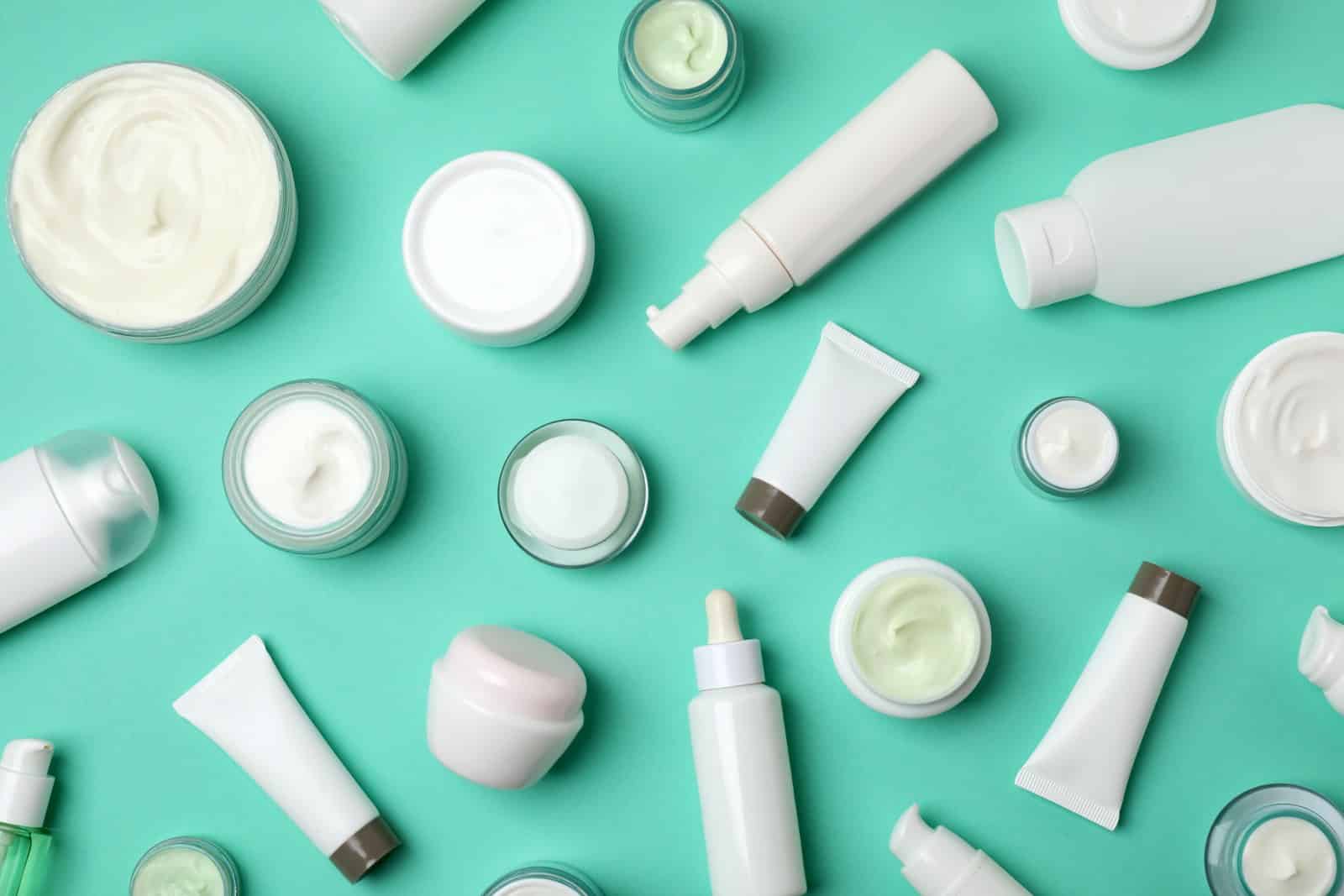
What’s the best skin care routine to reduce wrinkles and look younger?
For most people, it’s difficult to find a proper answer to that question. Lot’s of skin care advice is of low quality. Some important reasons for this are the following:
1. Lot’s of (online) skin care advice is not impartial
If you look for answers online, you get swamped with skin care advice. A lot of this advice is directly or indirectly sponsored by skin care brands, with links to their products and all. So you are getting far from independent, impartial advice.
2. Lot’s of skin care advice is low quality
Additionally, much advice is low quality, written by journalists or bloggers who don’t have a lot – or no – expertise in skin aging. Also, all too often, they just copy what other bloggers wrote, so you get a rehash of the same outdated or second-rate advice.
3. Skin care experts can be biased too
Turning to experts like dermatologists also does not always mean you get the best advice. Some dermatologists are inclined to promote their own products or treatments, or to recommend products they get paid for, especially online or in magazines.
Also, when you consult a dermatologist the therapy you get could mainly depend on the devices they invested in.
For example, if a dermatologist bought a lot of (expensive) laser devices, he will likely advise you to undergo a laser treatment. The same for a dermatologist who has mainly microneedling devices at her disposal. Or one who believes that low level light therapy is the best approach. And a dermatologist who likes to operate will likely recommend surgery to you.
4. Most skin care experts or bloggers have a limited understanding of the aging process
Besides an overabundance of beauty advice making it difficult to see the forest for the trees, there is another problem: a lot of skincare advice is not based on the science of aging (biogerontology).
Many beauty experts and dermatologists have a limited understanding of the aging process. The science of aging, and the root causes of aging are not or hardly educated at medical school. It’s also a very recent, new science.
Many skin care experts still think that skin aging is mainly caused by oxidative damage or DNA damage. Of course, we know that (skin) aging is much more complicated: it’s the result of epigenetic dysregulation, mitochondrial dysfunction, protein accumulation, telomere shortening, cellular senescence, and so on, as I discussed elsewhere.
Many skin care experts still recommend “antioxidants” for the skin, while innumerable scientific studies have shown that most antioxidants do not slow down aging (as I explain here).
Approaching skin care from aging (biogerontology)
So we need to approach skin care from a thorough understanding of the aging process, or biogerontology (this is the science of aging).
Aging is the fundamental cause of wrinkles, thin, sagged and aged skin.
Drawing on a deep understanding of the aging process helps to see which treatments are best, and which one you best avoid, especially in the long term.
For example, if you know that stem cell exhaustion plays an important role in aging, then some laser treatments of the skin would not be advisable because such treatments can damage too many stem cells in the skin, which could lead to long-term negative effects (despite having a “younger looking” skin in the short term).
Also, innumerable products and ingredients are touted to reduce wrinkles and rejuvenate the skin. Many of those (like most antioxidants) don’t really work or have disappointing results.
Luckily, specific products and ingredients work much better than most products out there.
So what is the best beauty routine for a youthful skin?
I’ll explain in this chapter. All products or treatments I mention here are not sponsored. This allows me to give impartial advice – contrary to most other websites which recommend sponsored skin care products.
I recommend these products because I use them myself or because they contain the right, high-quality, science-based ingredients in the correct doses and forms.
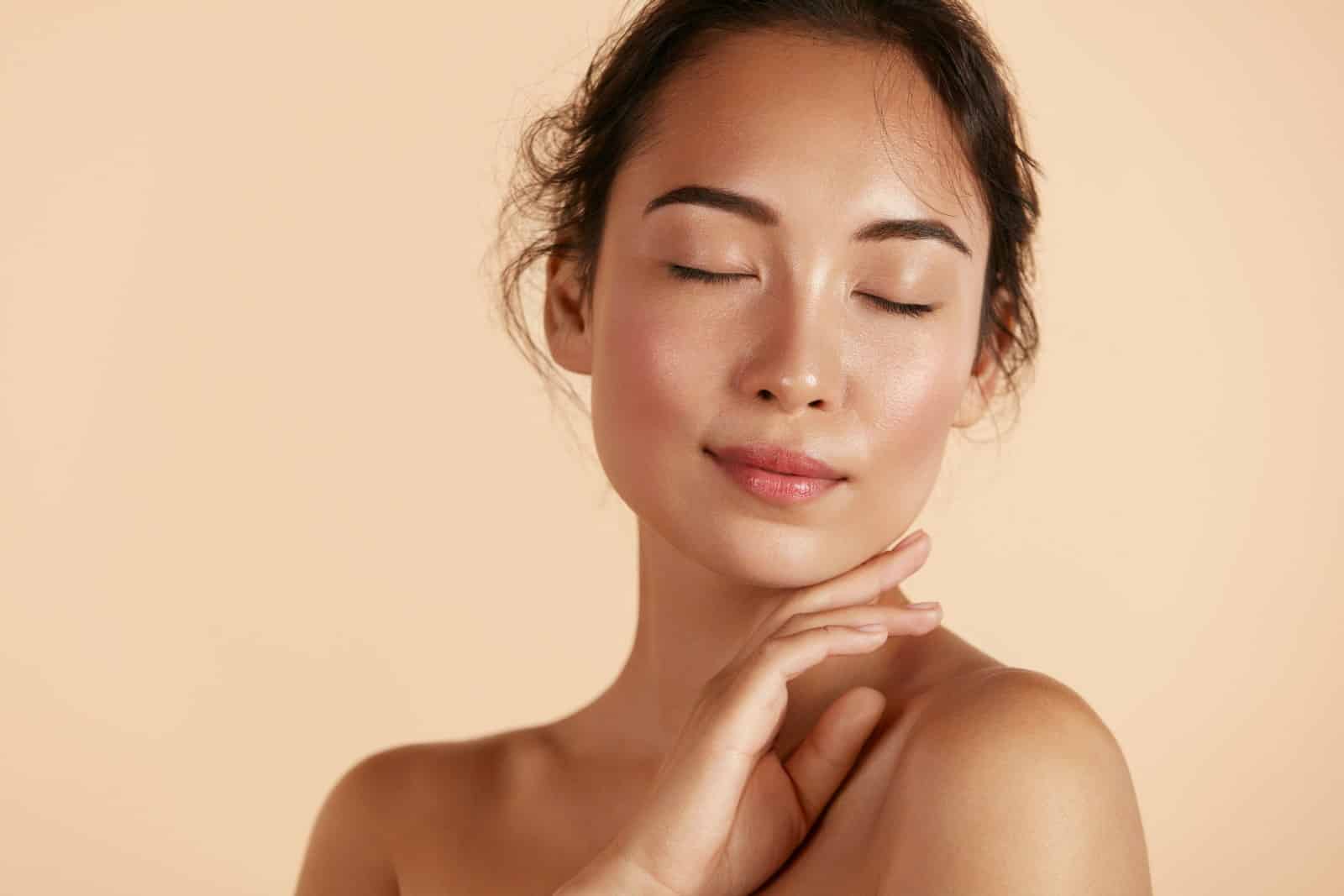
Basics of a proper anti-aging skin care routine
A good, science-based anti-aging skin care regime is actually quite simple. This approach consists of the following two important products:
- A science-based active-ingredient product, applied in the morning, which contains evidence-based ingredient(s) that can improve skin aging and health.
- A retinoid-based product, applied before bedtime. Retinoids are science-based active ingredients that reduce skin aging, wrinkles and increase collagen and elastin production.
To this regimen the following other, also important, products need to be added:
- A cleanser
- A high-quality moisturizer
- (A mild exfoliant – optional & has a disclaimer)
- A sunscreen
So this is what a great anti-aging skin care routine can look like:
MORNING
- Cleanser (I use this one – not sponsored)
- Mild exfoliator (I use this one – not sponsored)
- Active-ingredient product (this one or this one – not sponsored)
- Moisturizer (I use this one – not sponsored)
- Sunscreen (I use this one – not sponsored)
EVENING (before bedtime)
- Cleanser (I use this one – not sponsored)
- A retinoid-based product (I use a prescription-based 0,05% tretinoin cream)
To this regimen, you can add some extra specific products, for example to reduce wrinkles around the eyes (crow’s feets) (see further below).
So let’s start explaining this anti-aging skin care routine.
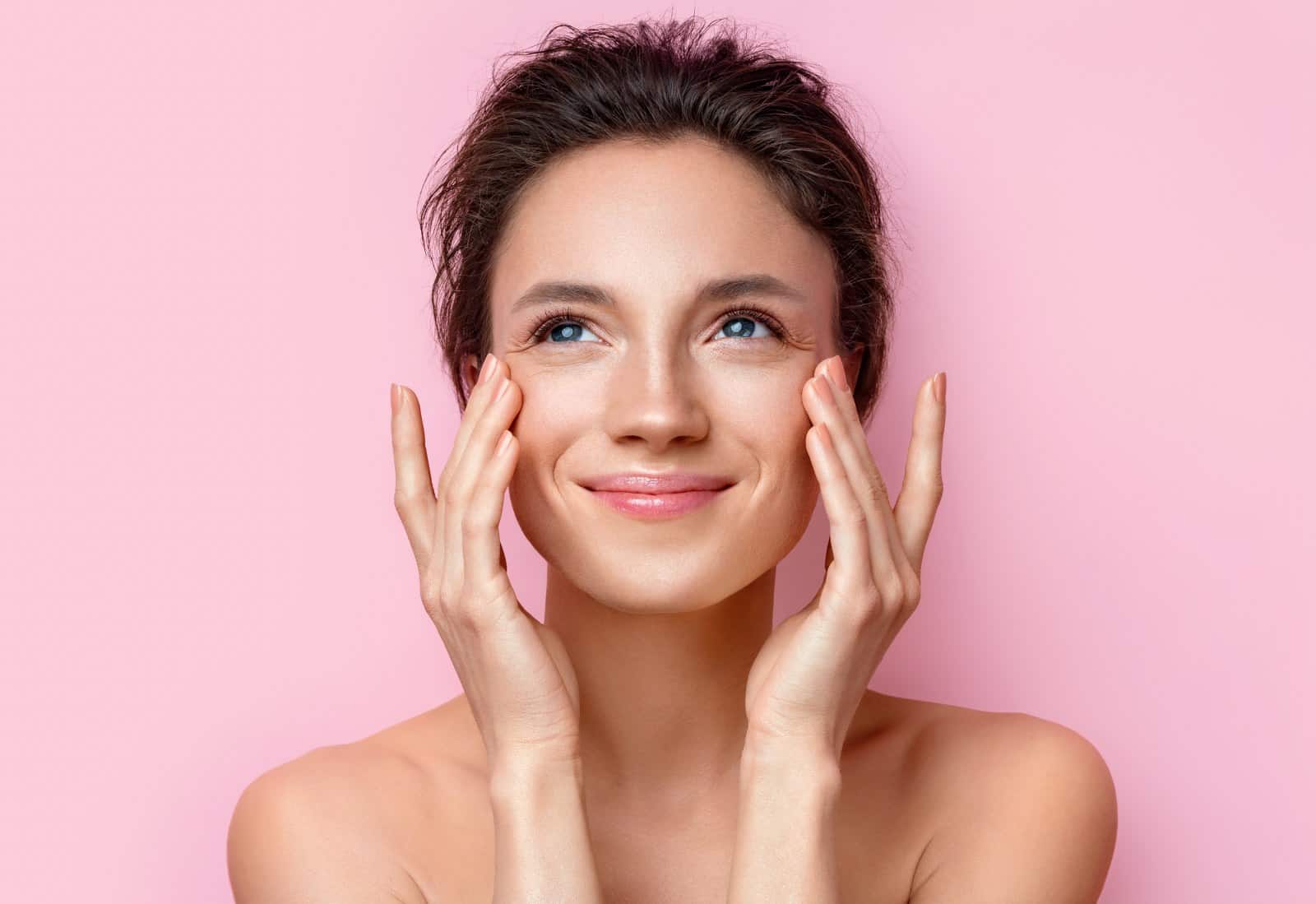
1. A cleanser
One should always start one’s skin care by thoroughly cleaning the skin. A good cleanser is a mandatory part of each skincare routine.
A cleanser cleans the skin from dirt, pollution, dust, and other substances that damage and age the skin.
Ideally, you use a cleanser that not only cleans, but also has some active ingredients in it, like vitamin C or magnesium.
For this reason, I use Age Perfect from L’Oréal (not sponsored) given it also contains vitamin C and magnesium and other beneficial ingredients.
When the skin is cleaned, you can apply your active-science based product.
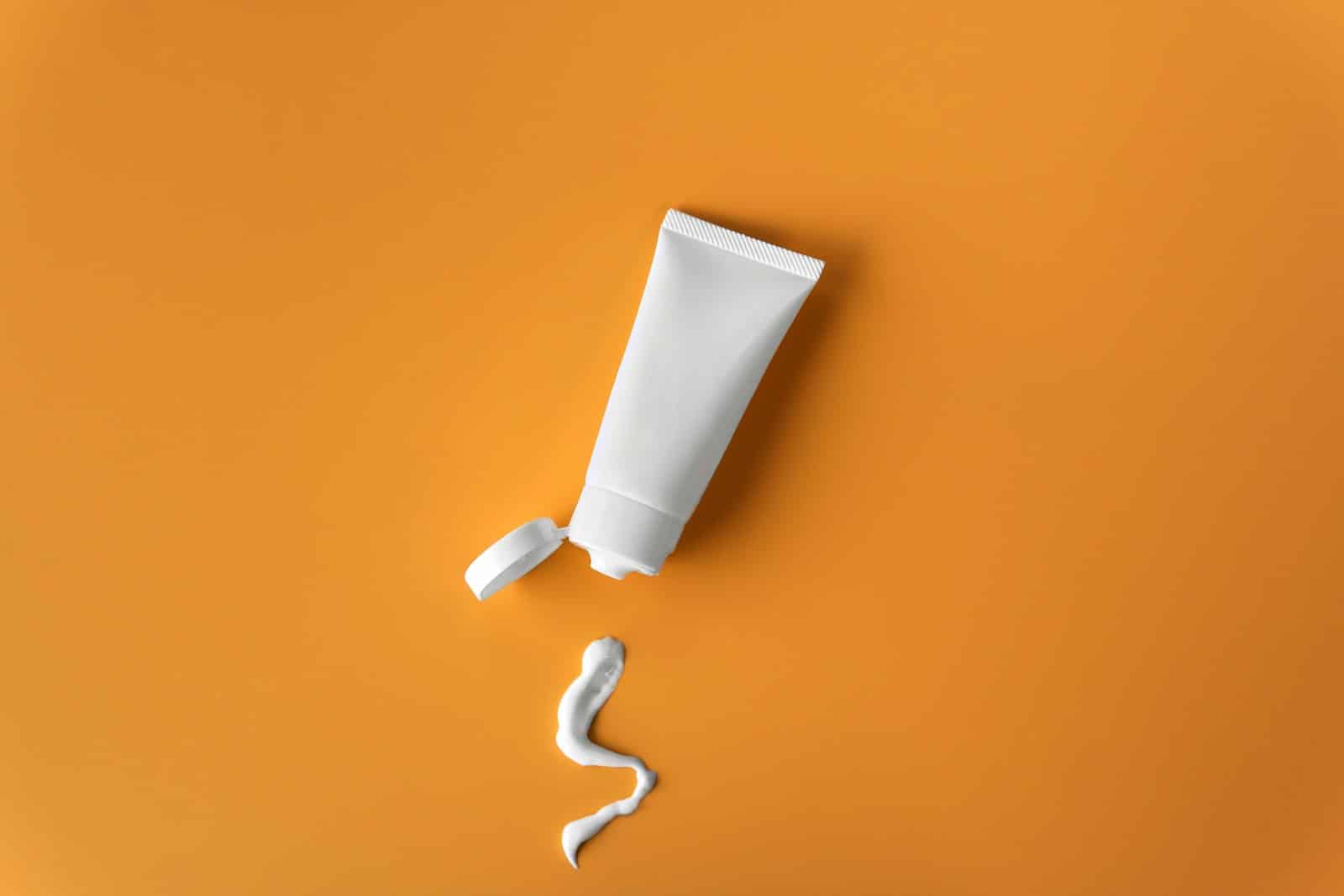
2. An active, science-based skin care product
As mentioned before, the two main products of a great anti-aging skin care routine are a science-based active product (in the morning), and a retinoid-based product (in the evening).
Science-based skin ingredients have been shown in multiple peer reviewed articles to improve skin health and aging. Examples of such ingredients are peptides.
Peptides are small parts of proteins (mostly parts of collagen proteins). They consist of a string of amino acids. These peptides are often connected with a fatty acid “tail” so they can penetrate more deeply into the skin, activating fibroblasts and other cells, and stimulate pathways increasing the production of collagen, laminins, integrins, and other substances that contribute to the structure and integrity of the skin.
Examples of skin peptides are palmitoyl tetrapeptide-7, palmitoyl tripeptide-1, palmitoyl dipeptide-5 diaminobutyroyl hydroxythreonine, palmitoyl dipeptide-5 diaminohydroxybutyrate, and others.
Examples of brand names that contain mixtures of such peptides are Matrixyl 3000 peptides, Matrixyl, SYN-Tacks dual peptides, SYN-AKE, Synthe’6, Argirelox peptides, etc.
Another interesting peptide is GHK-Cu. This peptide contains a copper atom. Copper is a mineral which is needed to build collagen. More precisely, GHK-Cu stands for glycyl-l-histidyl-l-lysine, which are 3 amino acids (glycine, histidine and lysine) connected to a copper atom (Cu). In various studies GHK-Cu has been shown to reduce fine lines and depth of wrinkles, smooth the skin, reduce photo damage caused by sunlight, decrease inflammation and support wound healing (R,R,R,R).
Examples of peptide-based skin products are The Buffet With Copper Peptides by The Ordinary (not sponsored), or Collagen Peptide Serum from The Inkey List (not sponsored).
I like the products of companies like The Inkey List or The Ordinary given they offer high-quality, science-based products for a good price (most skincare brands charge way too much for their products).
I apply it after I have cleansed my skin. Then, after I have applied an active-ingredient skin product, I wait 10 to 20 minutes before applying a high-quality moisturizer.
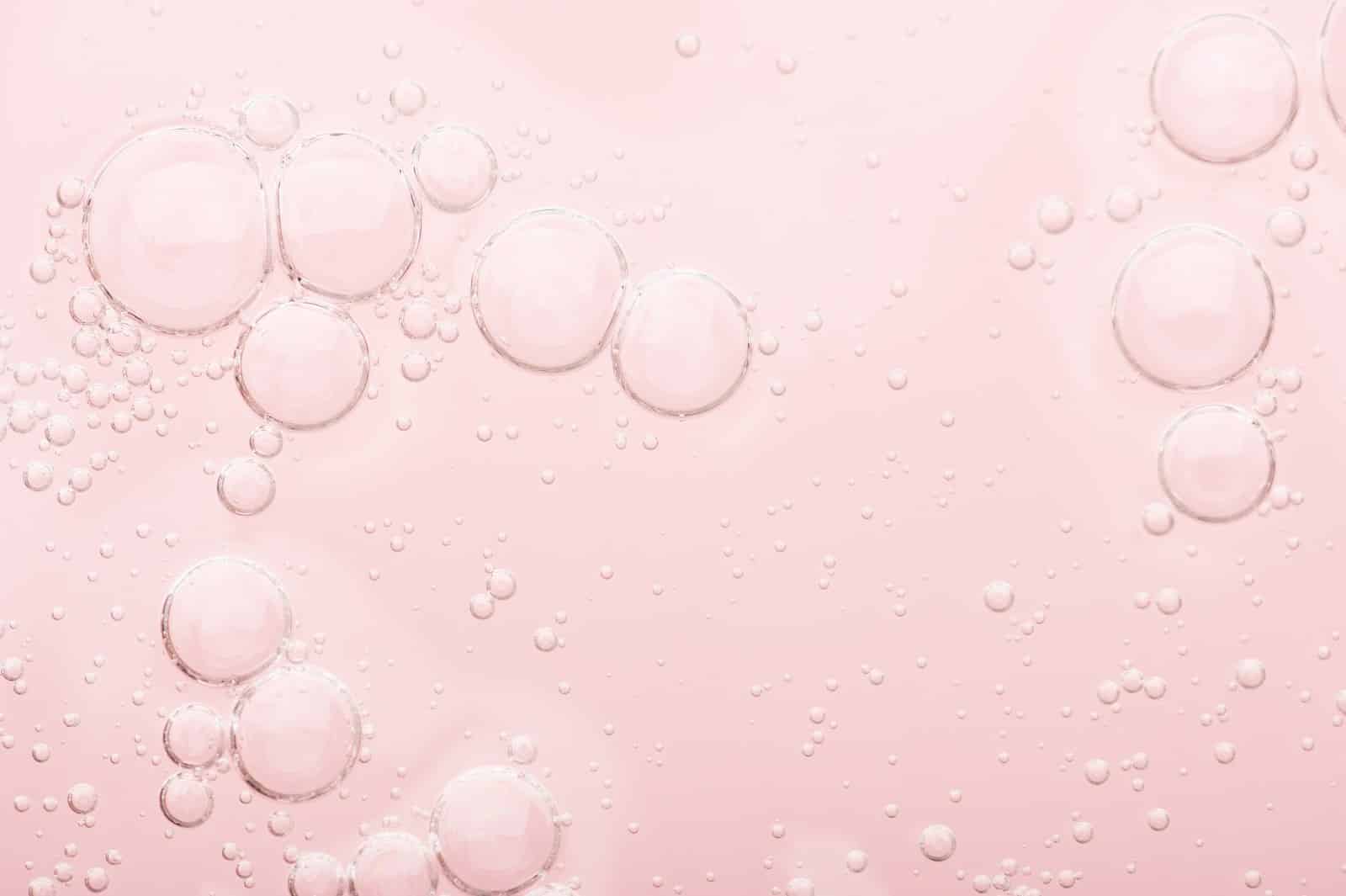
3. A high-quality moisturizer
A good moisturizer is an important part of a skincare routine. As we age, the skin becomes less moisturized and less able to hold moisture. This gives the skin a dried-out, dull, more wrinkly appearance.
As we age, the skin produces less molecules that are able to hold a lot of water giving the skin a plump, healthy appearance, like hyaluronic acid.
Also, the skin barrier becomes thinner, leading to more water loss from the skin.
A skin that has not enough moisturization will age faster given it’s less protected. Toxic substances can leak into the skin, damaging our skin cells. A less plumpy, moisturized skin also accelerates aging because the “pull and strain” on skin cells and skin stem cells changes their behavior and survival in a negative way.
Different kinds of moisturizers
There are 3 main kinds of moisturizers, depending on how they seal in or attract water into the skin:
1. Humectants
Humectants pull water into the skin, making it more plump and moisturized.
Examples: hyaluronic acid, glycerin, urea, propylene glycol, hexanediol.
2. Emollients
Emollients improve the skin barrier and make skin texture more smooth.
Examples: ceramides, squalene, fatty acids (e.g. linoleic acid, oleic acid, caprylic triglycerides), cocoa butter, shea butter, rosehip oil, argan oil, jojoba oil.
3. Occlusives
Occlusives form a barrier over the skin to trap moisture. So while emollients improve the skin barrier, the occlusives form a protective layer on top of the skin barrier.
Examples: silicones (e.g. dimethicone), beeswax and other waxes, lanolin, mineral oil, paraffin, etc.
For the purpose of anti-aging, hyaluronic acid is a good choice. This naturally occurring substance in our skin is an excellent moisturizer. During aging, we gradually lose hyaluronic acid. Besides moisturizing the skin, hyaluronic acid also has a signal function and can improve skin health (including skin stem cell health).
Oral hyaluronic acid (so taken as a pill) can also reduce wrinkles, and even slow aging, as I explain here.
Ideally, make sure your product contains at least 1.5 percent hyaluronic acid.
A product I use is Vichy LiftActiv Supreme H.A. Wrinkle Filler (not sponsored). It contains 1.5% hyaluronic acid.
Another good product is Paula’s Choice Hyaluronic Acid Booster (not sponsored), given it also contains vitamin B5 (penthanol) and ceramides, which further improve skin moisturization.
Another good product is Hydrating Hyaluronic Acid Serum (not sponsored), which also contains ceramides and vitamin B5.
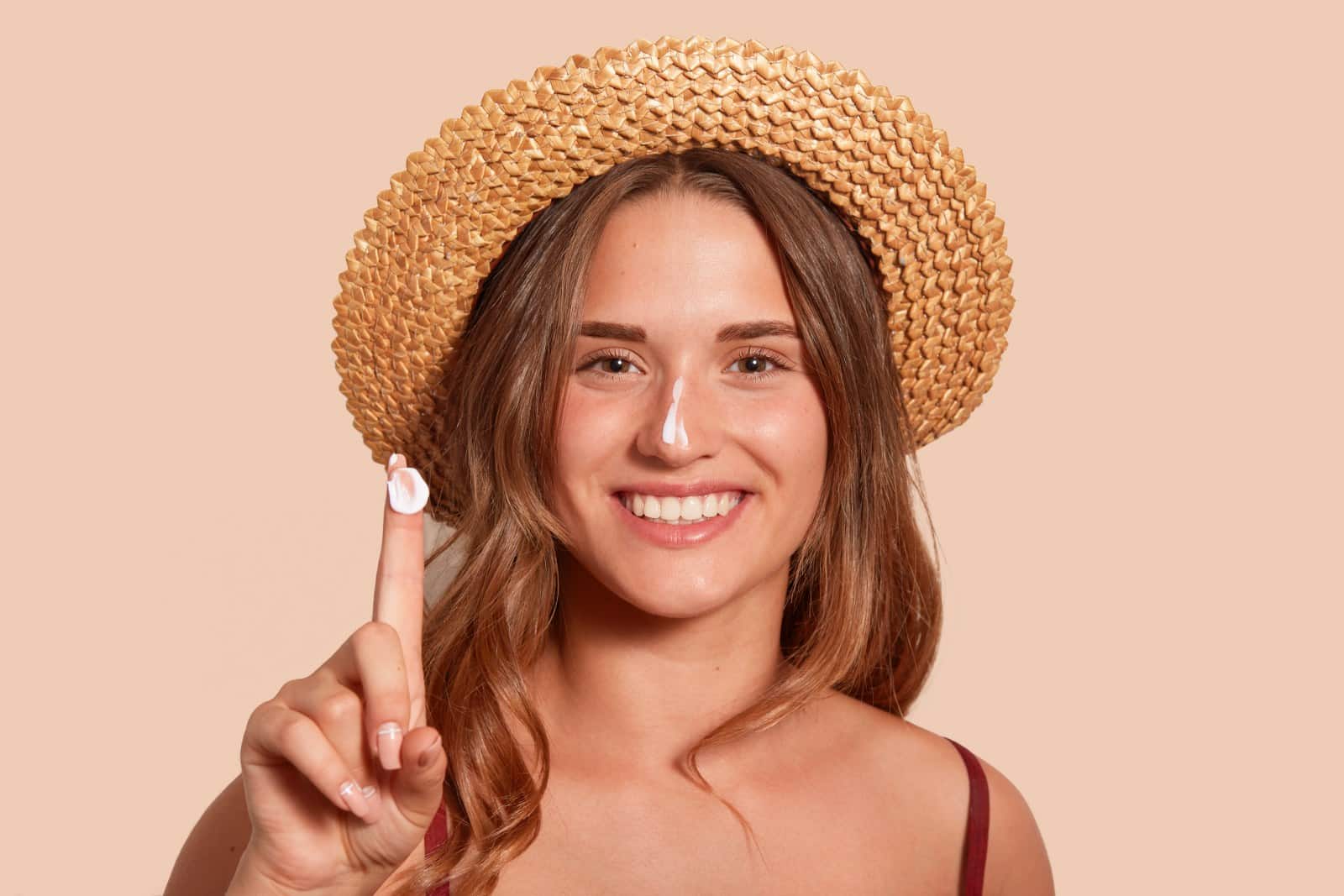
4. Sunscreen
A great part of skin damage and aging is caused by the sun. People often tend to underestimate the detrimental effect of sunlight on the skin.
Sunlight is extremely high-energy and powerful radiation – just let a black object lie in the sun and see how warm it gets after 10 minutes. Sunlight causes significant damage to our fragile skin, which consists mainly of water in which delicate proteins, fats and DNA float around which are easily prone to damage from high-energy sun radiation.
Although the sun is located 93 million miles or 148 million kilometers away, it can still cause a lot of damage to your skin here on earth. Sunlight especially induces large amounts of DNA damage (by forming thymine dimers for example), and this happens instantly. After around 20 minutes, so much DNA damage has occurred that the skin will start to become red and inflamed, which we call a sunburn.
Luckily, our skin cells can repair most of this damage, but not all, so every time when the skin is exposed to the sun some damage accumulates.
In fact, the reason why our skin tans is due to DNA damage. Skin becoming tanned is actually a DNA damage response. When sunlight causes DNA damage in our skin cells, they will start to defend themselves, producing brownish-melanin kernels. These form a protective shield around the cell nucleus (which harbors the DNA), absorbing the high-energy UV radiation in order to reduce the DNA damage.
So actually, becoming tanned is not healthy: it’s a DNA damage response set in motion by significant DNA damage in your skin cells.
As mentioned before, the skin never completely forgets all the DNA damage it accumulated. Therefore, people who often exposed themselves to the sun during their lifetime often look much older for their age. They have significantly more wrinkles, a tougher, more leathery skin, more liver spots, actinic keratoses (crusty, brown-yellowish spots), and many other forms of sun-damaged skin. They also have a much higher risk of skin cancers like basal cell carcinoma, squamous cell carcinoma, and the most lethal of them, melanoma.
But wait, is being more in the sun not healthy?
Of course, sunlight can be important for health: you need sunlight to produce vitamin D, and also to perk up your mood, and to improve your circadian rhythm helping you to fall asleep faster and sleep deeper. However, using these arguments to induce people to get more into the sun is not ideal advice, given sunlight is so very damaging to the skin.
I would still recommend being outside a lot, but try to be as much as possible in indirect sunlight. So I’m not advising you to go out in the sun and absorb as many sun rays as you can. Try to stay as much as possible in the shadows. Absorbing direct sun rays, even with a powerful sunscreen on, is not ideal. Sunscreens are not perfect, they still let through some high-energy radiation. Also, most sunscreens protect mainly against high-energy UV-radiation, but not against lower-energy infrared light, which also can still damage the skin and make it age faster (However, some forms of infrared radiation can be healthy. But when infrared waves deliver too much energy to the skin (measured in mWatt/cm2), as is the case when coming from the sun, they can damage the skin. In other words, if they can significantly warm up your skin, infrared waves still cause damage).
Sunlight consists of about 7% of UV light, 55% of infrared light, and the remainder is visible light (the light that we can see and which consists of all the colors of the rainbow). Some scientists speculate that also visible light, especially more high-energy blue light, still can damage the skin. And this even more so when combined with UV and/or infrared light, due to synergistic effects (R,R,R,R).
So going outside and being exposed to direct sunlight, even with a superb sunscreen on, can still damage and age your skin.
In other words, when going outside, try to prevent direct sunlight on your skin. Try to walk as much as possible in the shadows, always wear a cap or ideally a broad-brimmed hat, or use a sun umbrella (in many Asian countries you see them in so many places). And of course always apply sunscreen. To improve your vitamin D levels (you need sunlight to make vitamin D), take vitamin D as a supplement, as I explain here.
Is sunbathing addictive?
Some people won’t like this advice. They like being in the sun. They love the nice and warm glow of sunlight on their skin. In fact, sunbathing can be addictive, given sunlight makes your skin cells produce opioid-like molecules ( beta-endorphins), which then enter the bloodstream and could make you feel more cozy, happy and relaxed (R,R,R,R). However, sunlight also damages and ages your skin.
Some scientists speculate nature made sunbathing somewhat addictive in order to nudge us to go more into the sun to make sure we get enough vitamin D. It would not be the only evolutionary adaptation in this regard; an important reason why white people developed a white skin is to be able to make more vitamin D from sunlight; which was necessary when their dark-skinned ancestors moved away from warm and sunny Africa to colder, more cloud-cast regions in Europe about 65,000 years ago.
If you still want to have a tanned look, use self-tanning lotions or creams or “bronzers”. You can also buy self-tanners that are also moisturizers. And never use a tanning bed. It’s a recipe for accelerated skin aging and skin damage, and it significantly increases your risk of skin cancer. When I was a medical student, I saw too many 20 or 30-year-old women with metastasized skin cancer who died, most of them being regular visitors to tanning salons.
Are powerful, high SPF sunscreens better?
Use a sunscreen that is sufficiently powerful, meaning having a SPF (Sun Protection Factor) of 30.
However, whether you use a sunscreen with a SPF of 30 or one with a SPF of 50 is not really that relevant. Yes, a SPF50 will protect the skin for longer against DNA damage; around 50 times the minimum amount of time it takes to get significant skin damage (“red skin”), which is after about 20 minutes of sun exposure (the exact number depends of course on your skin type, time of the day, location on earth, clouds, or reflective surroundings – water and snow reflect lots of sunlight).
50 times longer protection from sun damage sounds good, but it’s somewhat irrelevant, given that often long before this time is over you have sweat off or whipped off most of the sunscreen you applied. That’s why it’s far more important to repeatedly reapply sunscreen every 2 hours when being in the sun, instead of focusing on buying sunscreens with super high SPFs.
Chemical versus mineral-based sunscreens
There is discussion ongoing about whether one should use a chemical-based sunscreen or a mineral-based sunscreen.
A chemical-based sunscreen uses chemical substances (molecules) to absorb UV rays, while a mineral-based sunscreen uses minerals like zinc oxide or titanium oxide to deflect UV rays.
So which sunscreen is best: a mineral-based one or a chemical-based one? To make a long and complicated story short, it doesn’t matter that much. Both are ok. If you have a more sensitive skin, perhaps you can use mineral-based sunscreen, but also many chemical-based sunscreens are hypo-allergenic or not that irritating. Far more important is that your sunscreen has a sufficiently high protection (a SPF of 30), and is applied daily and properly to your skin (so including on non-sunny days, and every two hours when you are in the sun).
Some good brands (not sponsored) are La Roche-Posay (the Anthelios line), Neutrogena, ISDIN, or Ultraceuticals. I use this one (not sponsored) because it also contains hyaluronic acid.
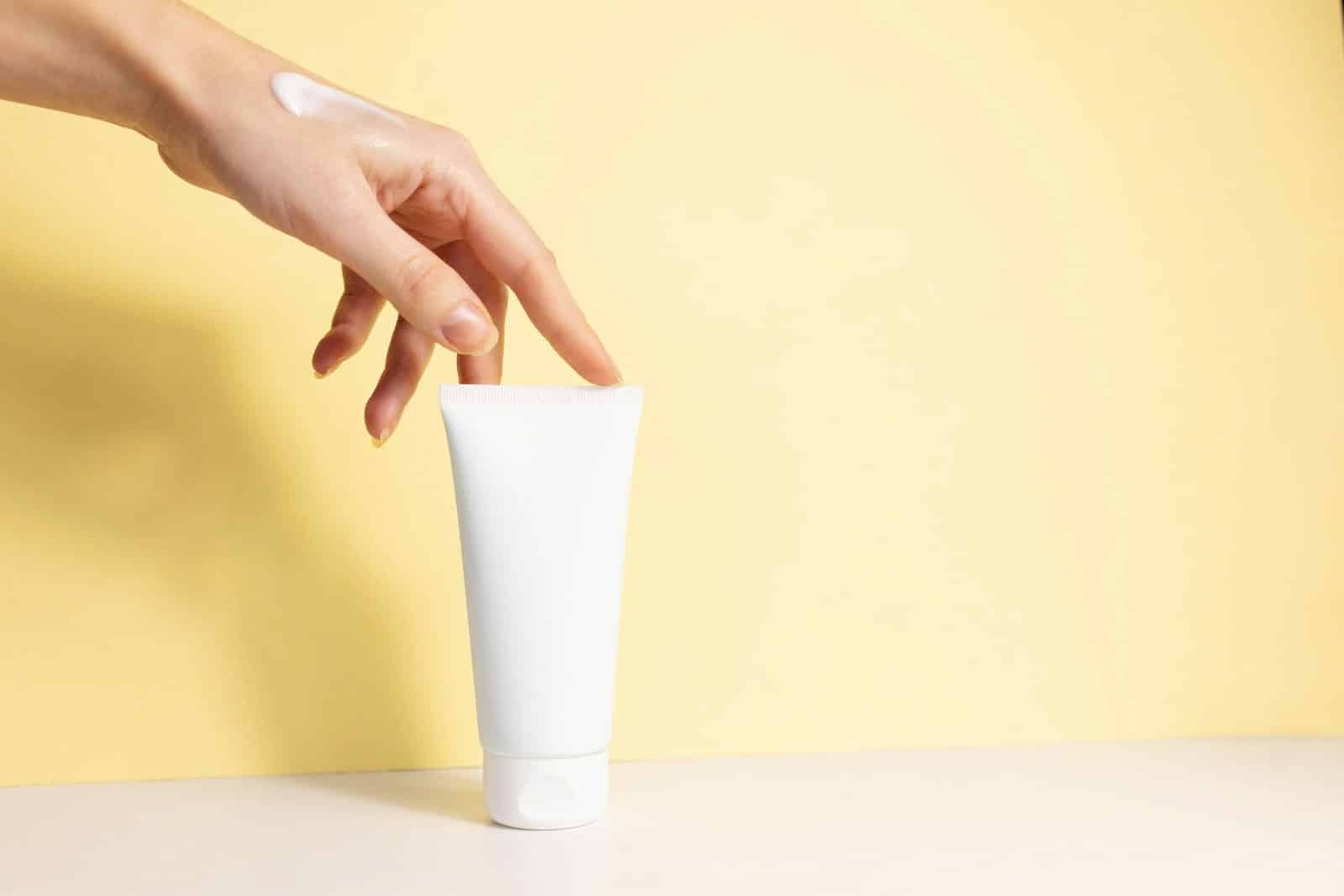
5. A retinoid-based product
Retinoids are the most powerful skin care products to slow skin aging, and to even partially reverse wrinkles. There is a lot of scientific evidence proving they work, and make the skin look younger.
Retinoids are derivatives of vitamin A. Natural vitamin A can be found in your body as retinol or retinyl esters.
Vitamin A is mainly stored in the liver in the form of retinyl esters (e.g. as retinyl palmitate). Retinyl esters are then converted to retinol in order to be transported in the blood to nearly all our cells.
Inside our cells, retinol is converted into retinal and then into retinoic acid (tretinoin), which is the final, bio-active form impacting many cellular processes, including important ones to maintain skin health.
There are different kinds of retinoids. Some retinoids are more powerful than others. Arranged from least to most powerful:
- Retinyl esters (e.g. retinyl palmitate, retinyl propionate, retinyl acetate)
- Retinol
- Retinal (also called retinaldehyde)
- Adapalene
- Tretinoin (also called retinoic acid)
Retinoids have epigenetic effects on the skin, reduce inflammation and sun damage, and increase production of collagen and even elastin.
I prefer tretinoin (retinoic acid) given it’s the most powerful form of retinoids. In our cells, retinol and retinal are converted into tretinoin which exerts the main biological effects.
However, tretinoin is prescription-based in most countries, meaning you have the hassle of having to first see an MD to get a prescription.
Therefore, a good alternative to tretinoin is retinol. Retinol-based skin products are available without prescription.
Retinol, especially combined with ingredients that further potentiate its effect, is an excellent alternative to tretinoin.
How to properly use retinoids (tretinoin, retinol)
If you start to use retinoids, especially tretinoin, it’s important to start slowly and gradually build up the dose.
If you apply too much cream in the beginning, your skin can become irritated (e.g. becoming red or sensitive), or will peel off too much.
Therefore, start with applying just a pea-sized amount of cream on your entire face every other or even every two days. After around 3-4 weeks, if your skin can tolerate it, start applying it every day.
It’s possible that after a while (e.g. after a few months) using your retinoid cream your skin still suddenly starts to peel off too much, or becomes irritated. That could be a sign to cut back with your retinoid cream. What you then could do is implement some retinoid-free days.
For example, for one or two days per week, you don’t apply retinoids, so you can allow the skin to recover, enjoying a little retinoid-pause.
Also importantly, during the first weeks and months you apply retinoids, your skin also becomes more sensitive to the sun, so always use a sunscreen (which you would need to apply anyhow).
When will my retinol or tretinoin cream start to work?
As with many skin care products, you have to be patient. With retinol and tretinoin-creams, it takes at least 6 months to a year to see a substantial reduction of wrinkles and increased skin thickness and plumbness. Often, after a year real results start to show up.
Also, keep in mind that the skin renews itself every month or 1.5 months, so it takes a few renewal cycles to start seeing effects.
Some good tretinoin skin creams are Retin-A (USA), Renova (USA) or Ketrel (Europe). A good dose is a cream with a concentration of 0.05% tretinoin.
Some good brands for retinol skin creams are Roc Retinol Correxion Wrinkle Correct Serum (not sponsored; preferred choice but can give some allergic or other skin reactions in people), or Neutrogena Retinol Cream + Hyaluronic Acid cream (not sponsored).
Can I combine my retinol or tretinoin cream with other products?
Given retinoids are acids, do not combine them with exfoliating acids like glycolic acid or salicylic acid, given this could be too taxing for the skin.
Therefore, always use exfoliating acids in the morning and retinoids in the evening.
Also, if you use peptide-based active skin products (see further down), it’s advised to not apply them immediately before or after you applied a retinoid (or an exfoliating acid) given too much acidity can impact the structure of peptides.
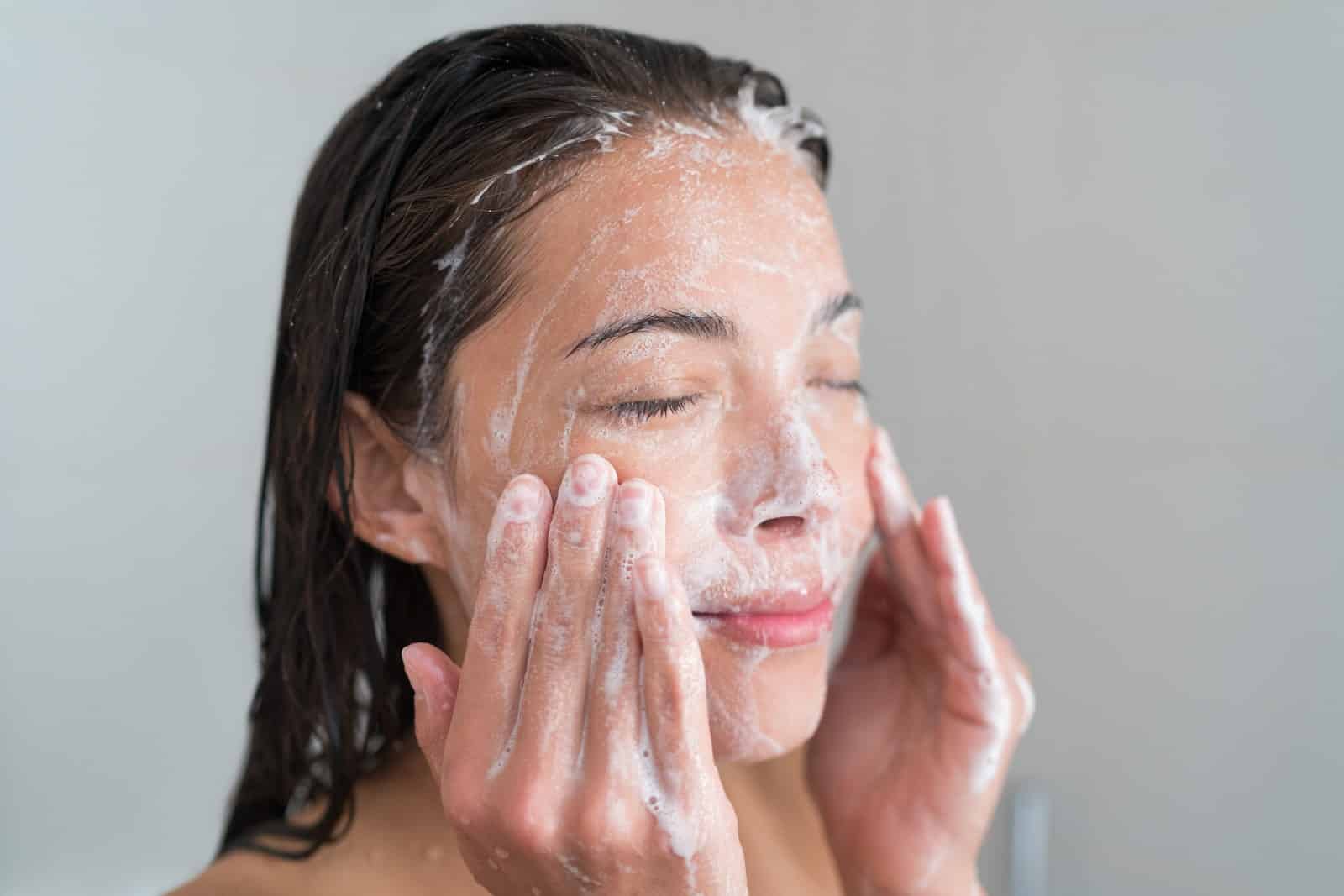
6. An exfoliant or exfoliator (optional)
An exfoliator contains acids, such as glycolic acid or salicylic acid. These peel off the outer layer of dead skin cells, which gives your face a healthy glow. That’s why these products are also called “skin peeling” products, or “chemical peels”.
However, one has to be somewhat careful with exfoliators, as I will explain further down.
How exfoliators work
One of the reasons the skin of young people looks young is because their skin has a higher turnover of skin cells.
For example, skin cells are renewed every 25 days in a 25-year old, while in a 50-year-old the skin turnover is around 40 to 50 days. So in older skin, the skin cell turnover is slower, leading to more dead and dysfunctional skin cells piling up, giving the skin a more coarse, gray, dull look.
Young skin to the contrary is renewed much faster, giving it a shiny, fresh, and more healthy glow, and that’s one reason why it looks “young”.
This is also why immediately after exfoliating the skin looks more shiny and healthy, given lots of dead skin cells have been removed, exposing the younger, fresh skin cells.
Besides removing dead skin cells and increasing the skin cell turnover, exfoliators can improve skin health in other ways.
For example, they increase collagen production in the skin, especially glycolic acid. They can also reduce inflammation, which is especially the case for salicylic acid.
However, in some people, exfoliators can damage the skin or make the skin look older (see further down).
Different kinds of exfoliators
There exist different kinds exfoliating acids, which are divided into three main groups:
- Alpha-hydroxy acids (AHAs)
- Glycolic acid: its small size allows it to penetrate the skin deeper, inducing collagen production
- Mandelic acid: is more gentle on the skin compared to other acids
- Others: lactic acid, malic acid, tartaric acid.
- Beta-hydroxy acids (BHAs)
- Salicylic acid: is good at reducing inflammation.
- Poly hydroxy acids (PHAs)
- Gluconolactone, lactobionic acid and maltobionic acid: these are larger molecules compared to standard exfoliating acids, penetrating the skin less deeply, but working more slowly and being less irritating. That’s why they are often used for people with sensitive skin.
Glycolic acid is among the more preferred acids, given glycolic acid is a very small molecule which can penetrate the skin deeply and stimulate fibroblast cells to produce more collagen.
Another good choice are products with salicylic acid, which is an acid that both exfoliates and reduces inflammation.
Wash-off versus leave-on exfoliators
Broadly speaking, there are two ranges of exfoliating products:
- Wash-off exfoliators: which you apply and then wash off
- Leave-on exfoliators: you apply them and leave them on the skin
Leave-on exfoliators stay on the skin after applying them, you don’t wash them off. This way they have more time to penetrate the skin and exert their effects deep into the skin.
A wash-off exfoliator on the other hand has the advantage that it can better remove dead skin cells. This is interesting when you are using a retinoid product, which often causes skin peeling and flaking. A wash-off exfoliator is a great way to remove these pesky skin flakes, which sometimes can be all over your face and make it look like you suffer from a skin disease. Another advantage of a wash-off exfoliator is that it’s more gentle on the skin compared to a leave-on exfoliator, because you only leave the acid on the skin for only a short while.
An example of a leave-on exfoliator is Paula’s Choice 5% AHA (not sponsored) , which contains glycolic acid, and also ceramides for skin moisturization and EGCG extract from green tea. Another example is Beta Hydroxy Acid (BHA) Serum (not sponsored) from Inkey, which, besides salicylic acid (2%), also contains hyaluronic acid for moisturization, and zinc.
I don’t use a leave-on exfoliator (in some people it can actually cause more wrinkles, especially under the eyes, as I explain further down). I do use a wash-off exfoliator, namely Olay Regenerist Regenerating Cream Cleanser (not sponsored). One reason why I use this exfoliator cleanser is that it also contains sharp, little grains that help to better scrub the skin, removing some peeling that can occur because of the tretinoin cream I use.
An example of another wash-off exfoliator is the Salicylic Acid Cleanser from Inkey (not sponsored); it contains the right dose of salicylic acid (2%), and also zinc and allantoin.
Can exfoliators or peeling products damage your skin?
It’s important to not use exfoliants in too high concentrations. Too strong exfoliation can damage the skin.
For example, for glycolic acid, it’s better to use solutions that contain around 5 to 15% glycolic acid and to steer away from solutions with 30 to 40% glycolic acid. The latter is a very high concentration, and can damage the skin, especially our very sensitive and fragile skin stem cells. Such high concentrations of acids are used in dermatologist offices or by beauty experts providing peeling treatments. But in such high concentrations, these acids are too harsh on the skin, and could damage the skin in the long term.
The same for salicylic acid. Ideally, use solutions that contain around 2% salicylic acid.
However, in some people, even low concentrations of peeling acids, like 5% of glycolic acid in the form of a leave-on product, can still make their skin worse, damaging the skin or making them look older.
I have seen this especially in people with thinner or more fragile skin, or in people with an aged skin. Especially the skin under the eyes can get thinner, and more wrinkly, especially when squinting.
This is why I only use a mild wash-off exfoliator containing salicylic acid (which also removes the skin peels I sometimes have from using a retinoid cream).
However, everyone’s skin is different. There are people who have great results with exfoliating products. Therefore, I added exfoliators as optional. Also keep in mind that when starting such a product, start with a low dose, and see after a few weeks how your skin is doing. If our skin can tolerate them and you experience positive effects, you can increase the concentration of the peeling acid, if needed and wanted.
Also, if you do use an exfoliating product, never use them together with retinoid-based products (e.g. a tretinoin or retinol product). Retinoids are also acids, like exfoliators, so combining the products can be too acidic for the skin.
Additionally, keep in mind that just like with retinoid-based products, exfoliators make your skin more sensitive to the sun, especially in the beginning. So always use sunscreen as the last step of your skincare routine.




